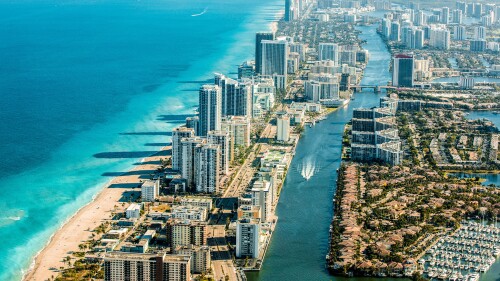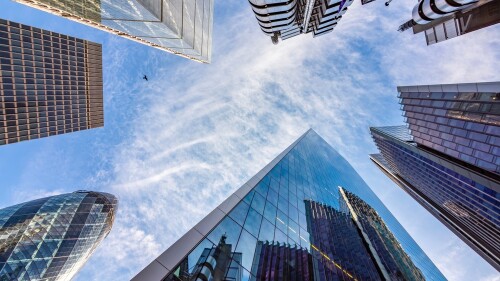Resilience and Sustainability
Despite the headwinds to rebuilding quickly and efficiently, just after the worst of the Los Angeles fires, ULI Los Angeles joined UCLA Ziman Center for Real Estate and the USC Lusk Center for Real Estate to shape a response plan, created in just six weeks.
Fort Lauderdale, Florida, is experiencing increased flooding of local streets, even without major rain events or high winds, and residents are demanding answers. While many are calling on the city to elevate certain streets above the floodplain, ULI experts caution this is the least desirable solution because it can have severe negative consequences on nearby homes and businesses.
Within days of the fires, the three institutions formed a Rebuild Advisory Committee. The Project Recovery report, produced by about 100 leading experts in land use, urban planning, and economic development, offers in-depth technical analysis and actionable recommendations to accelerate recovery and build long-term resilience in communities.
ULI Europe is calling for innovators from across the built environment and technology to submit groundbreaking solutions to tackle the dual crises of housing affordability and decarbonization of the built environment, in the ULI PropTech Innovation Challenge (PIC) 2025.
India, one of the fastest-growing economies in the world, is urbanizing rapidly. By 2030, more than 40 percent of its populace is projected to live in urban areas, contributing there to more than 70 percent of the nation’s greenhouse gas emissions. The demand for commercial and residential spaces is surging, which attracts global investors eager to capitalize on this dynamic market. This rapid growth comes with a pressing question, however: can India urbanize without following the carbon-heavy trajectory of other developed countries?
Building on ULI’s impactful work accomplished at the city scale, a neighborhood-focused workshop brought together industry experts from across Europe and from the United States, representing a wide spectrum of the real estate value chain. The aim was to share diverse insights, cross pollinate ideas and develop practical solutions towards decarbonization and for a better collaboration.
As buildings become more efficient and run on “cleaner” energy sources, the industry’s attention will need to include embodied carbon—emissions associated with the manufacturing and transportation of building materials, as well as the construction, maintenance and disposal of buildings.
10 projects model ways to prepare the built environment for climate stresses and shocks
It’s no secret that insurance costs for commercial real estate have been rising significantly for many property owners across Europe, which, in turn, affects net operating incomes for many of them. Many factors are at play to explain the surge in higher premiums, including expensive and scarce reinsurance, inflation, and regulatory restrictions.
A recent ULI member–exclusive webinar titled “Climate Risk & Insurance: Is the global real estate sector entering an insurability crisis?” addressed the rising cost of property insurance premiums, impacts on commercial real estate, and strategies for protecting long-term profitability.

![07[1].jpg](https://cdn-ul.uli.org/dims4/default/2a18780/2147483647/strip/true/crop/4287x2409+0+475/resize/500x281!/quality/90/?url=https%3A%2F%2Fk2-prod-uli.s3.us-east-1.amazonaws.com%2Fbrightspot%2F5a%2F1c%2Fe19541d341af8104a918d841326e%2F071.jpg)








